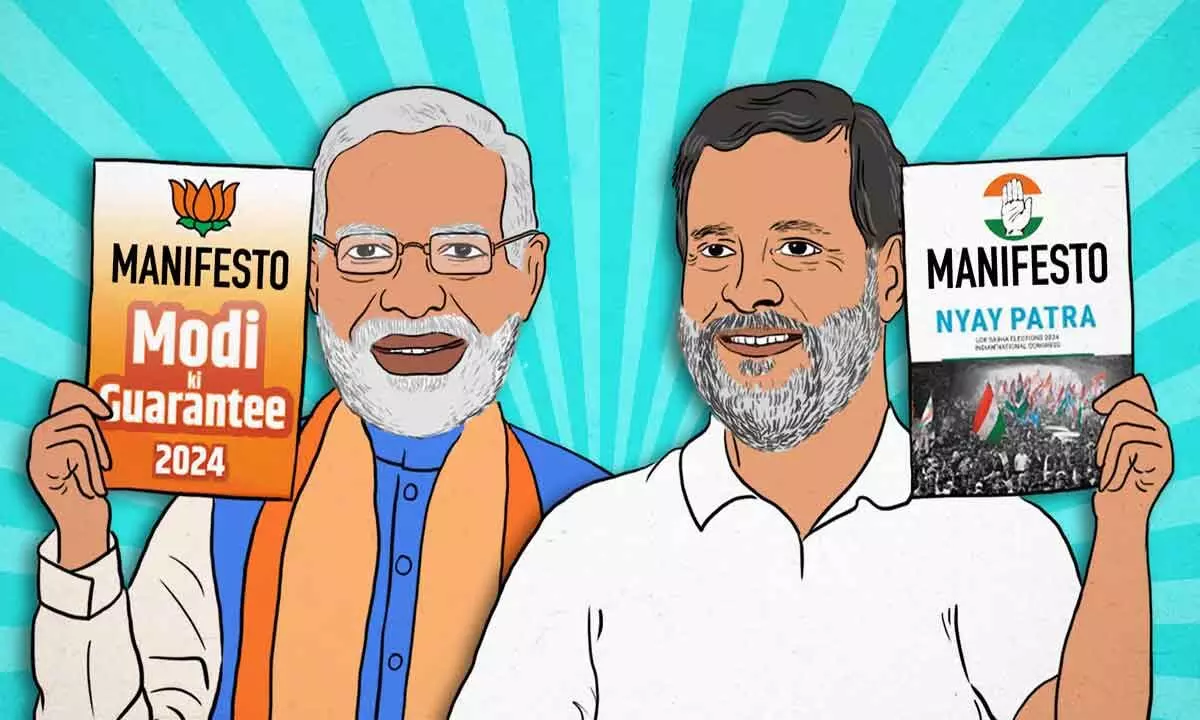Poll manifestos are a mirror reflection of the contenders
image for illustrative purpose

Although, manifestos are written to inform voters, it is a different thing altogether that Indians, by and large, don’t bother to go through them. As a civilisation with an oral tradition, voters listen to speeches, which then become the manifesto of the leader and his party. They speak about burning issues like unemployment and inflation, promising guarantees to youth, women, farmers, workers and social justice to marginalized sections. Not delivering on poll manifestos has serious consequences for the people, especially for those who belong to the poor and middle classes.
The impact hits the per capita income, consumption of goods and services, and even the standard of living. Household net assets have declined, household liabilities have increased and families are borrowing more. It’s important to note that the overall impact on job creation depends on various factors, including the pace of technology adoption, government policies and the ability of the workforce to adapt to evolving industry needs. While some sectors may see significant job growth, others may undergo shifts or restructuring, impacting employment differently across industries. Overall, the dynamic and evolving nature of the job market will be influenced by how these trends unfold and integrate into the broader economy.
To promote the manufacturing sector and foster job creation, Deloitte suggests that the government consider expanding the coverage of the Production-Linked Incentive (PLI) scheme to encompass additional sectors such as garments, jewellery and handicrafts in the upcoming Union Budget. It is crucial to steer clear of overly rigid measures. The budget should clearly outline efficient sunset clauses, seamless dispute resolution mechanisms and eligibility criteria tied to production milestones. Rather than enforcing strict local sourcing levels initially, incentives should be linked to specific benchmarks.
The year 2024 brings another wave of challenges and opportunities for the future of work. Organizations face unprecedented uncertainty with global talent shortages and the mandate to control rising costs and measure risky technology’s productivity returns. Companies are actively seeking talent to enhance their manufacturing processes, improve efficiency and stay competitive in the rapidly evolving landscape. A recent Goldman Sachs report also looks at the rise of the affluent population in the country, expecting it to touch 100 million by 2027 with 60 million today earning an annual $ 10,000 per person.
Post-elections, the ruling party will have to address industry concerns around archaic labour laws, inflation remains a worry and economists often talk of a lag effect on prices because of the increase in money flow that tends to happen during elections. Clarity on approach to self-reliance its extent could mean getting to be a closed economy. This is also a concern. This year, climate change is mentioned in all national party manifestos, along with commitments to promote renewable energy and, for the first time ever, critical minerals. For example, the BJP and Congress manifestos emphasise working towards achieving net-zero by 2070.

